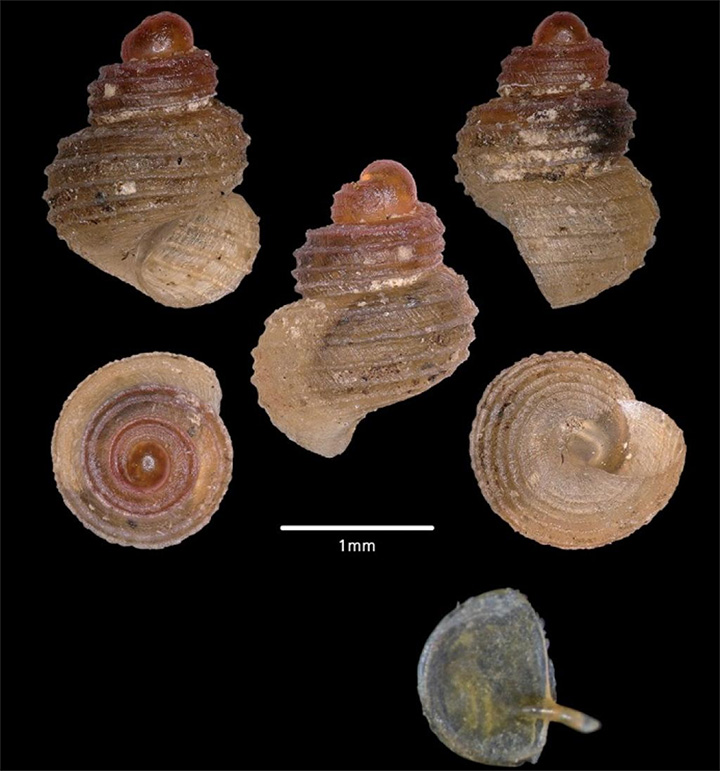Georissa Mawsmaiensis: A Micro Snail Species | 21 Oct 2021
Why in News
Recently, a micro snail species named Georissa mawsmaiensis has been discovered in Mawsmai Cave in Meghalaya.
Key Points
- About:

- The new species is unique from Georissa sarrita (a member of the same genus discovered in 1851) in its shell morphology, starting from shell size variation to the presence of four very prominent spiral striations (a minute groove, scratch) on body whorls of the shell.
- These spiral striations, which are counted from the suture to aperture in apertural view, are seven in Georissa sarrita.
- Habitat:
- Georissa is found in soil or subterranean habitats in lowland tropical forest as well as high altitude evergreen forests or on rock surfaces rich in calcium.
- Distribution:
- The members of the Georissa genus are widely distributed across and reported from Africa, Asia, and the Pacific. However, they are confined to microhabitats consisting of limestone caves or karst landscapes formed by the dissolution of limestone.
- Threats:
- The high tourist influx may pose a threat to this micro snail species including other cave faunas.
Mawsmai Cave
- It is situated in the small village of Mawsmai, around four kilometres from Cherrapunjee (Sohra) in the East Khasi Hills district of Meghalaya.
- The term ‘Mawsmai’ means ‘Oath Stone’ in the Khasi language. The Khasi people use the local term ‘Krem’ for the cave.
- Mawsmai cave is located at an altitude of 1,195 metres above sea level and is indirectly influenced by the streams of the Kynshi river originating from the East Khasi Hills.
- The cave is famous for its fossils, some which you can spot if you spend some time peering at the walls and formations inside.
